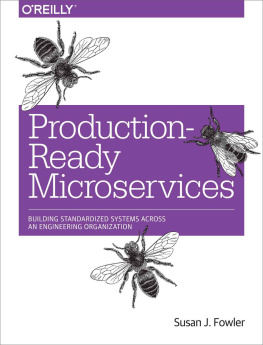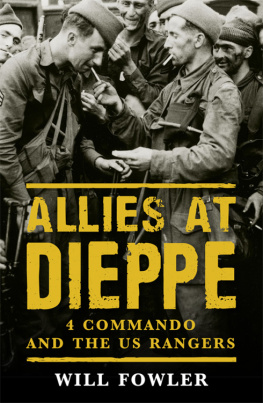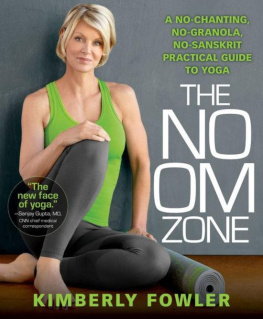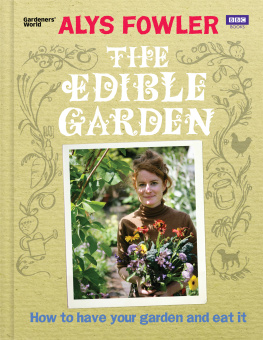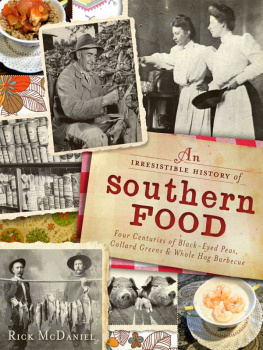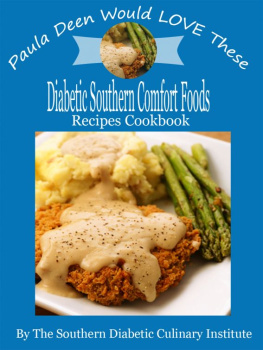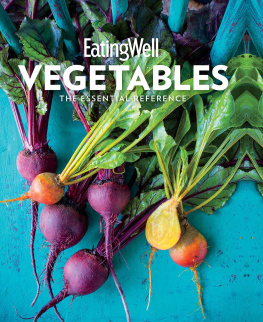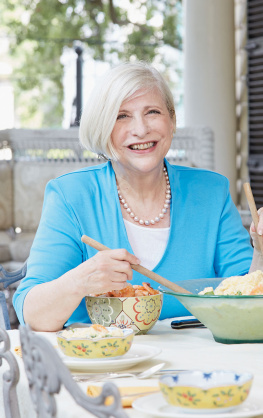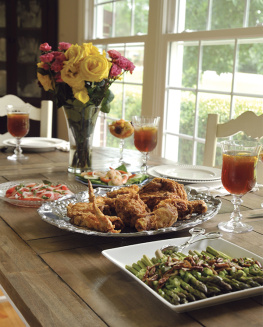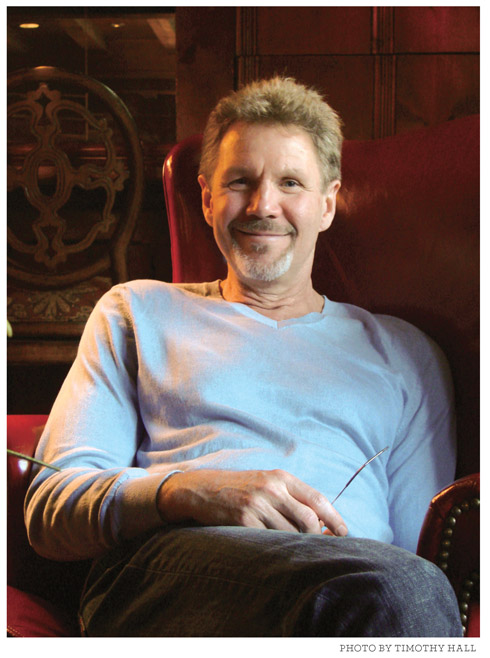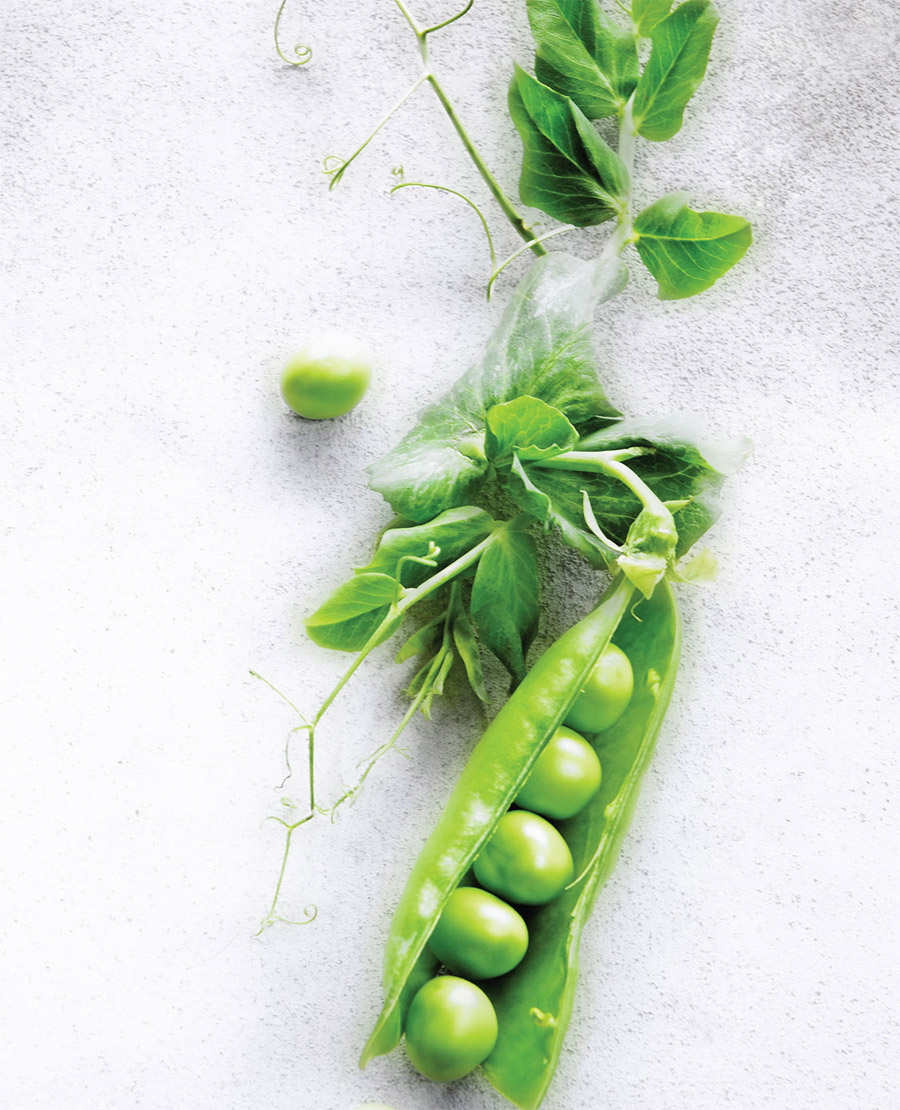About the Author
Damon Lee Fowler is a culinary historian, a food writer, and the author of numerous cookbooks, including Savannah Chefs Table (Lyons Press), Classical Southern Cooking, Fried Chicken: The Worlds Best Recipes, and The Savannah Cookbook. His work has appeared in national publications, including Bon Apptit, Food & Wine, and Relish. He lives, eats, and writes in Savannah, Georgia, where he is the featured food writer for the Savannah Morning News.
Acknowledgments
Southerners only sound as if their mouths are full of grits all the time; usually, they arent. But our mouths really are open most of the time where food is concerned. Were either eating or, the next best thing to it, talking about eating. This is a lucky break for any writer interested in Southern food.
In order to get the essential character of the Southern way with produce, I talked to as many good Southern cooks as I could find. Getting them to talk wasnt difficult; getting them to hush was. Fortunately, they tend to be generous souls; I often got recipes without asking for them. Many recipes came from friends and relatives, and even from people who were complete strangers to me when I asked for their help. I have a file of twice as many recipes as follow on these pages, a testament to their generous spirit. Those who gave me recipes are credited in the text. Space prevents my listing you all here, but I thank yall with all my heart.
The first people I must thank are the ones who will protest that they were only doing their jobsmy agents, Elise and Arnold Goodman. Without their believing in me, the idea for the book would never have blossomed, much less sold. My original editor, Harriet Bell, with her keen eye, keener taste buds, and enthusiasm for good food and writingnot to mention her friendshipmade this book great fun to put together. And my new editor, Amy Lyons, who believed in this book, did not believe it was finished and rescued it from the dusty shelf where it had been lying fallow for the better part of two decades.
The late Marcella Hazan and her husband, Victor, continue to be my inspiration and the rule by which I measure my own work. They have touched every aspect of my life and career with a generosity that still fills me with awe. Without them, I would never have had the courage to make the fateful leap into a new career and it is their unflinching fidelity to the universal principles of good cooking that have kept me on the straight and narrow.
Karen Hess was my friend, teacher, counselor, and moral guide in one. She was never too busy to help me with a problem in research or cooking technique, or to just lend her ear when my spirits were lagging. I miss so much about her, but I think what I miss most is her raucous laugh. Such merit as my work has owes her a large debt.
John Martin Taylor has been constant with his friendship and professional support. His friendship and, through him, that of his sister Sue Highfield and partner, Mikel Herrington, have been a continuous joy and inspiration.
While I was working on the original edition of this book, Jackie Mills, Andria Hurst, and Judy Bess Feagin were at Southern Living magazine, and generously provided great technical and moral support. Jackie gave me recipes, and Judy (then head of the magazines legendary test kitchen) talked me though recipe-testing problems.
When I am lax about staying in touch with her, Ill get a call out of the blue from my drill sergeant, Nathalie Dupree, to catch up on gossip, see what Im up to, and to make sure that Im staying as busy as she thinks I ought to be. She gave me several recipes for this collection, but her contribution, through her friendship, has been much larger than that.
As only Southerners can, Ruth Adams Bronz and I became very close friends in a short period of time. When we were barely acquainted, she carted me all over New England with no more recommendation than that we were both Southern and loved food. Shes my one-woman therapy group. And speaking of therapy, one phone call from my late friend Marie Rudisill (also known as the Fruitcake Lady) was known to get me through six months without going off the deep end. Her wit and wisdom have been both life preserver and compass, and I miss her every day.
Fellow writer Martha Giddens Nesbit has been an ever-present and reliable friend and technical support. When I think I cant go on, I would just watch Martha juggle a successful marriage, two growing boys, and two careers, and think I had it easy after all. Martha also introduced me to our mentor and Macon Mama, Clara Eschmann, who shared my creed: Thank God for Bourbon. Clara let me run off with some of her books without scolding memuch. She has passed on since the first edition of this book, but her spirit still informs and inspires my food writing.
Janes Canners, the brigade of women who make pickles, relishes, and chutneys for St. Johns annual bazaar, were game to be invaded by a man and helped me test the canning recipes in this book. Headed up by the parishs capable (and first female) senior warden, Jane Pressly, and co-chair Betty Shepherd, they were Evelyn Birchall, Nancy Cope, Mary Ellen Greenwood, Cathy Jarman, Louise Mauer, Laurie Osteen, and Millie Summerell.
My former neighbor Tom Edenfield had nothing whatsoever to do with this book, but badgered me about not being mentioned in my first one until I promised to put his name in here. There you go, Tom. Yet another neighbor, Richard Galloway, gave me free access to modern office equipment and let me regularly raid his herb garden. Still another, Renee Zito, loaned me antique books. Virginia Scott lent me several cookbooks from her collection and let me keep them for a lot longer than most would. My friend and former architectural clients Susan and Rick Sontag have been a tremendous supportin both professions.
As always my parents have been generous in their support. They spent years and untold amounts of money helping me become an architect, but they also have thrown their unqualified support behind me as I drift into another careerand have been amazingly silent about the tremendous debt that I owe them. This time, they also actively helped with recipe research. I feel lucky that they are still around.
My late friend Jim King allowed me to subject him to test runs of every single recipe in this book and was generous and unflinchingly honest with his opinion, whether I wanted to hear it or not. Jim is no longer with us, but in the years since this book was first published, the role of unflinching critic has been amply filled by Timothy Hall, who keeps me grounded and centered.
Finally, my gratitude and love to all traditional Southern cooks everywhere, from Shreveport to Sri Lanka, who have never stopped believing that the Southern way with flavor is good and worth preserving, who have kept the faith in the face of culinary fads and packaged foodwho remain steadfast in a world that is changing faster than a Southern belles mind.
Thank God for every one of you.
The Soul of Southern Cooking
VEGETABLES AND FRUIT
The words Southern cooking inevitably have great conjuring power, though what they conjure may not always be very close to reality. The first thing that the words usually evoke, at least for most people, seems to be fried chicken; and, you might well wonder, why not? Celebrated the world over, there are surely few things to eat that can equal its perfection. Ive heard fried chicken called the soul of Southern cooking, a point that surely few would argue.


